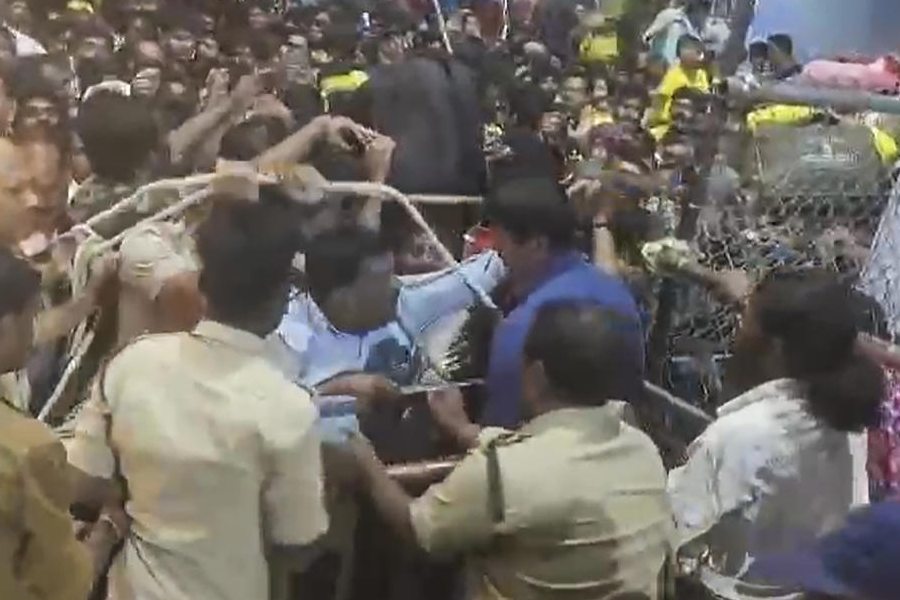After Jasprit Bumrah led India to a splendid victory at the Perth Test, performing exceptionally well as bowler and as captain, I recalled a column I had written many years ago. This had made the case for Anil Kumble to lead the Indian Test team. Titled “Do bowlers make good captains?”, the column was published in The Hindu on July 26, 1998.
I was writing against the grain, seeking to combat — or at least nuance — the widespread belief that batters made the best captains. Since captaincy was far more important when a side was in the field, it was commonly held that batters would be more focused and dispassionate in making bowling changes as well as in setting fields. It was said that when bowlers led their sides, they tended either to under-bowl or over-bowl themselves, usually the latter.
The argument in favour of batter-captains was also buttressed by some historical evidence. Writing in 1998, I acknowledged that the most successful captains in Test history tended to be batters, pre-eminently Donald Bradman and Clive Lloyd, but also Len Hutton, Frank Worrell, and Allan Border (this was before the onset of Steve Waugh’s stunningly successful stint as Aussie skipper). Nonetheless, I argued, there were some impressive counter-examples: notably Richie Benaud of Australia and Ray Illingworth of England, both spin bowlers who led their sides with distinction.
At the time, the Indian captain, Mohammad Azharuddin, was reaching the end of his career. I argued that when the time came for Azhar to go, Anil Kumble would make a worthy successor. He was possessed of a high degree of intelligence — not just cricketing intelligence — and had led his state side, Karnataka, to an impressive Ranji Trophy triumph. Besides, just as Benaud had in Alan Davidson another strike bowler to take wickets alongside him, and Illingworth had the likes of John Snow and Derek Underwood, Kumble could rely on Javagal Srinath. Therefore, unlike India’s previous bowler-captain, Kapil Dev, who was his side’s sole strike-bowler for most of his career, there was less likelihood of Kumble not knowing when to take himself off. (Notably, even with this handicap, Kapil had some noticeable successes as captain, notably in England in 1983 and 1986).
In that column published a quarter-of-a-century ago, I remarked that “the prejudice against bowler captains is part of a general tendency to treat bowlers as the underclass of cricket. Batsmen are the glamour boys of the game, the pin-up models eagerly pursued by fans and sponsors alike.” Nonetheless, I continued, “history tells us that, all other things being equal, bowlers can make good and successful captains if they are not expected to carry the attack. So long as Srinath is around and bowling well, so long as one does not have to look to Anil Kumble to get the other side out on his own, the claims of the Karnataka wrist-spinner must be given due consideration when the time comes. Let not these claims be summarily set aside by the dogma that bowlers do not or cannot make effective captains.”
Alas, I was whistling in the dark. When, less than a year later, Azhar was relieved of the captaincy, he was replaced by Sachin Tendulkar, despite his earlier and entirely undistinguished tenure in the top job. After eight Tests, Tendulkar was in turn replaced by Sourav Ganguly, who had a successful run, especially in home Tests. When his batting form declined and he was dropped, Rahul Dravid took over for a spell.
Azharuddin was, of course, a batter first and foremost; as were his three successors as skipper: Tendulkar, Ganguly, and Dravid, all of whom relied considerably on Anil Kumble to get them wickets and win them matches. There was even a Test against Sri Lanka in 2005, when with Dravid absent, the far less experienced (and far more whimsical) Virender Sehwag was chosen as captain even though Anil Kumble was in the side, merely because he mostly batted while Kumble mostly bowled.
In the event, Anil Kumble had to wait 83 Tests after Azhar retired to get a chance to lead India for the first time, against Pakistan in 2007. What might Kumble have done had he been appointed earlier? For Kumble was as respected as Tendulkar for his ability to win matches, as aggressive on the field as Ganguly, as cricket-smart as Dravid, as much of a team-man and as fiercely proud of the India cap as anyone who had ever played for the country. Had he become captain in 1999 (as I and some others had hoped), Kumble might have been in the job for the better part of a decade, first with Srinath as his additional strike bowler, and then with Harbhajan Singh and Zaheer Khan sharing the burden of taking twenty wickets and winning Test matches. Though the question is entirely hypothetical, there is no reason to suppose that he might not have had a long and reasonably successful spell as captain of India.
In the event, Kumble had an altogether brief tenure. Its highlight, surely, was the Perth Test of 2008, which, like the Perth Test of 2024, saw India going into the match looking defeated and despondent. They had lost the previous Test in Sydney, largely because of a series of shockingly unfair dismissals, which saw top Indian batsmen being given out through a combination of gross umpiring errors and Aussie sharp practice. Yet Kumble marshalled his dispirited troops effectively towards a brilliant win at Perth.
That was sixteen years ago. This time, after a humiliating three-nil loss at home against an unfancied New Zealand side, pundits had written off India’s chances in Australia. Their captain, Rohit Sharma, and a leading batsman, Shubman Gill, were both absent from the crucial opening Test. When India batted first and were dismissed for 150, those forecasts of a 4-0 drubbing at the hands of the hosts appeared to be well on their way to being realised. Then, in a spectacular turnaround in the last session of
the first day, India’s captain, also India’s best bowler, broke the back of the Australian batting. Over the following two days, the Indians batted their way to a commanding position, preparing the way for a resounding win.
The assurance and authority with which Jasprit Bumrah led his side on the field at Perth has been widely commented upon. What was deeply impressive, too, was his conduct at the press conference at the conclusion of the match. Here, Bumrah revealed himself to be a person of exceptional intelligence and maturity, about the game of cricket and about life itself. In the past year, with Rohit Sharma getting on in years, some commentators have suggested that Shubman Gill should replace him as captain when the time comes. There was also talk of Rishabh Pant as an option. Such speculation was entirely predicated on the prejudice against bowler-captains. Now, however, after the way Bumrah led the team in Perth, there can be little doubt that he should be Sharma’s successor.
At the time of the Perth victory in January 2008, India’s captain, Anil Kumble, was thirty-seven years old. His career had not much longer to run; in fact, he retired from Test cricket before the end of the year. At the time of the Perth victory in 2024, India’s captain, Jasprit Bumrah, was a few weeks short of his thirty-first birthday. Rohit Sharma will most likely exit the game fairly soon. Bumrah, however, still has four, perhaps five, years of hard Test cricket ahead of him.
Like Kumble when he played, Bumrah is by some distance India’s leading strike bowler. Like Kumble again, Bumrah has counted on the support of wicket-taking companions. Of these, Ravichandran Ashwin, Ravindra Jadeja and Mohammed Shami are older than him, and all probably have no more than a year or two to go. However, Mohammed Siraj and Kuldeep Yadav are both younger than Bumrah, while, as with Harshit Rana at Perth, there are Indian bowlers younger still who might make a mark in Test cricket. All this bodes well for Jasprit Bumrah to become India’s finest bowler-captain yet.
ramachandraguha@yahoo.in











